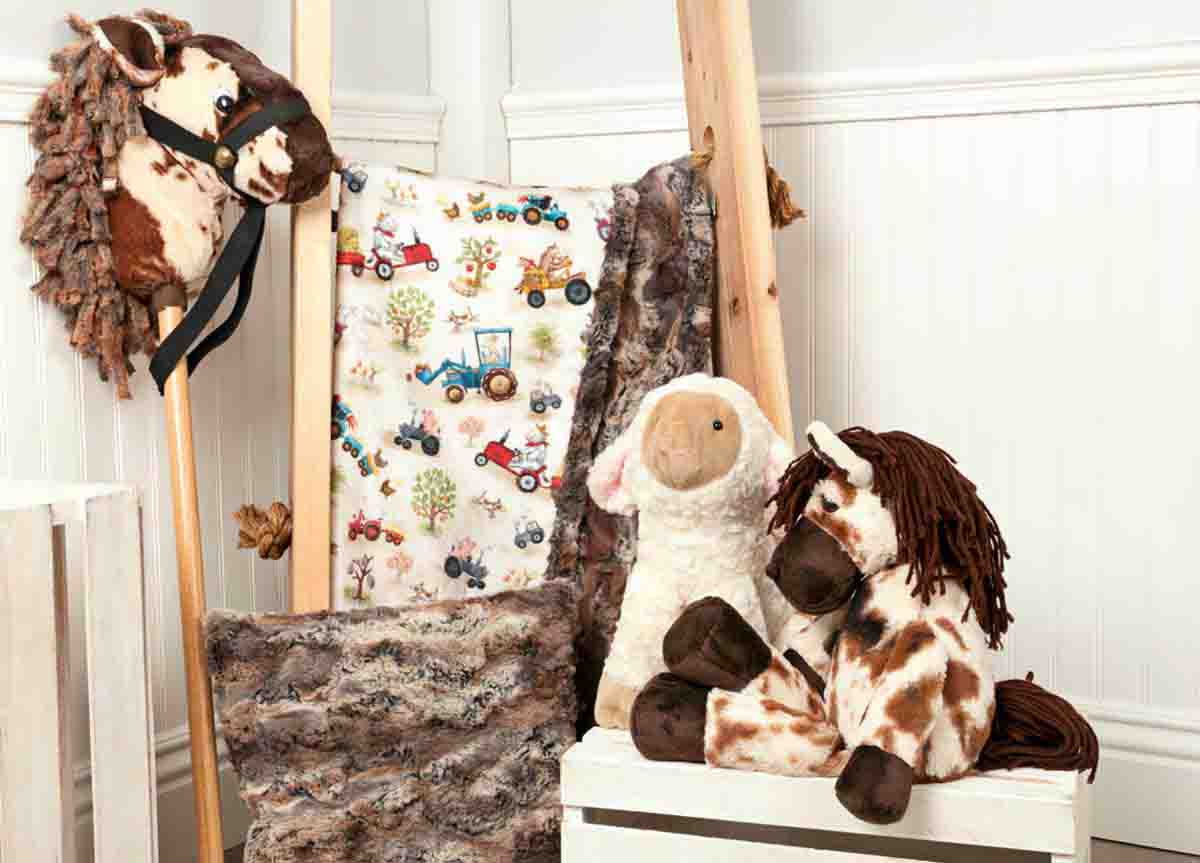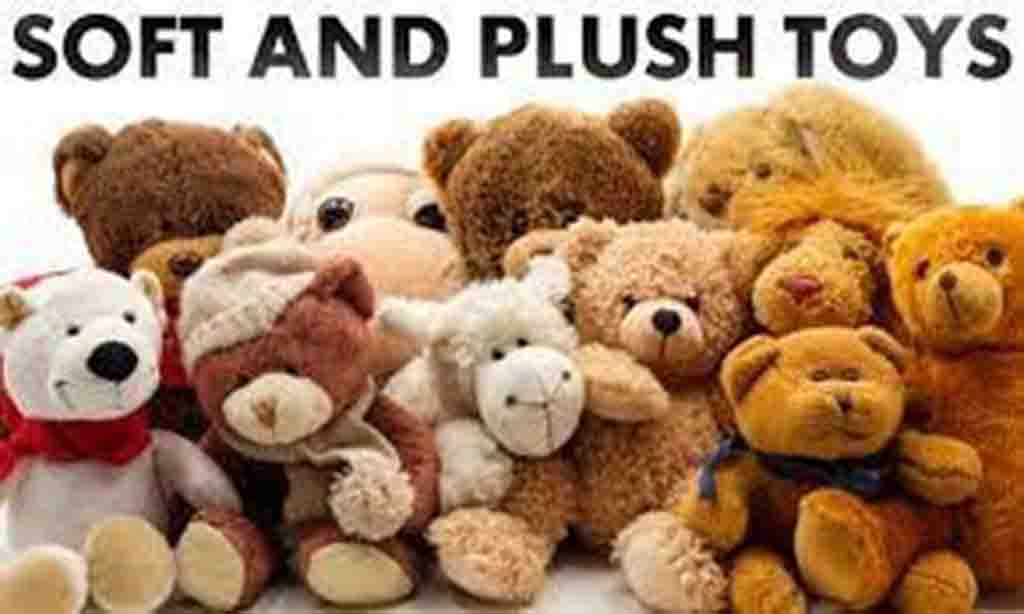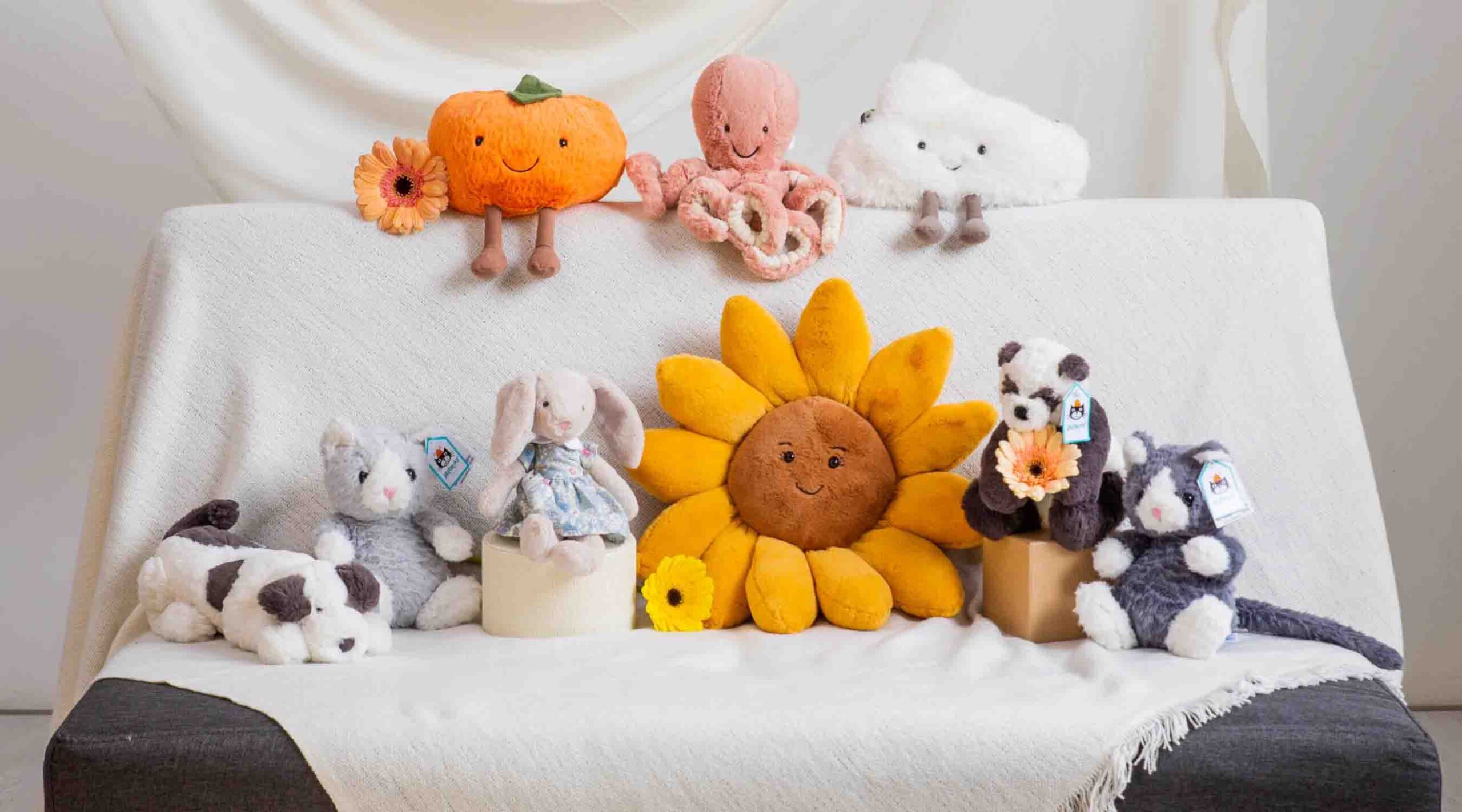Soft toys are not just playthings—they are emotional companions, collectibles, and lifestyle products that connect with people of all ages. Their success depends on a combination of physical comfort, safe design, durability, and emotional appeal. For manufacturers, understanding these characteristics is crucial to producing toys that satisfy both consumers and international buyers.
This guide explores the defining characteristics of soft toys, from physical softness to sustainable innovations that shape today’s plush markets.
What physical attributes define the softness and huggability of plush toys?

The physical feel of a plush toy is what immediately attracts buyers. Softness and huggability depend on fabric texture, stuffing balance, and ergonomic shape.
Key Physical Features
- Surface fabric texture – Materials like minky, velboa, and fleece create soft and inviting surfaces.
- Stuffing density – Balanced filling makes toys plush without feeling stiff.
- Ergonomic design – Round, symmetrical bodies enhance huggability.
Market Importance
A plush toy’s huggability is its strongest selling point. Children, adults, and collectors alike judge quality based on how the toy feels when held.
| Attribute | Impact on Feel | Market Value |
|---|---|---|
| Fabric Softness | High | Immediate appeal |
| Filling Density | High | Defines comfort |
| Shape/Design | Medium | Improves huggability |
How do material and filling choices influence durability and comfort?

The materials inside and outside a plush toy determine longevity and comfort. A soft toy should remain cuddly after months—or years—of use.
Outer Materials
- Polyester plush – Durable, affordable, and consistently soft.
- Cotton and organic cotton – Natural, breathable, but less durable.
- Faux fur and velvet – Premium options that create distinctive feels.
Filling Options
- Polyester fiberfill – Lightweight, hypoallergenic, and industry standard.
- Memory foam shreds – Provide long-term structure in premium plush.
- Microbeads or pellets – Add texture and weight for sensory or therapeutic plush.
Balance Between Softness and Durability
A plush toy filled only with fiberfill may flatten too quickly, while too many beads can make it heavy and less huggable. Successful toys often use hybrid fillings for optimal softness and shape retention.
| Material/Filling | Softness | Durability | Best Application |
|---|---|---|---|
| Polyester Plush | High | High | Mass-market plush |
| Organic Cotton | Medium | Medium | Eco-conscious buyers |
| Memory Foam | Medium | High | Premium plush |
| Fiberfill | High | Medium | General plush |
| Beads/Pellets | Variable | High | Therapeutic plush |
What role do stitching methods play in safety and longevity?

Even the softest fabrics and best fillings fail if the stitching is weak. Craftsmanship ensures safety and extends product lifespan.
Stitching Techniques
- Reinforced seams – Prevent tearing under pressure.
- Invisible ladder stitch – Creates seamless closures that are durable and aesthetically pleasing.
- Double-stitch reinforcement – Essential for stress points like arms, legs, and ears.
Safety Impact
Strong stitching prevents stuffing leakage, which can pose choking hazards for children. It also ensures that toys pass seam strength tests required in ASTM and EN71 certifications.
| Stitching Method | Benefit | Market Use |
|---|---|---|
| Reinforced Seams | Prevents tearing | Standard toys |
| Ladder Stitch | Seamless finish | Premium plush |
| Double Stitching | Extra durability | Children’s plush |
How do design details affect emotional appeal and user experience?

A plush toy’s emotional success often comes down to design details that create personality and charm.
Emotional Design Elements
- Facial expressions – Gentle smiles, wide eyes, or subtle features create emotional connection.
- Colors and themes – Soft pastels appeal to children, while bold or themed designs target collectors.
- Accessories – Scarves, clothing, or interactive features add uniqueness.
User Experience
Plush toys that evoke warmth and comfort are more likely to be cherished long-term. Emotional design enhances consumer satisfaction and brand loyalty.
| Design Detail | Effect on Appeal | Target Market |
|---|---|---|
| Facial Expression | Emotional bond | Children & adults |
| Color Scheme | Market targeting | Global buyers |
| Accessories | Differentiation | Collectors & retail |
Which safety certifications characterize high-quality soft toys?

Safety is one of the most defining characteristics of a high-quality plush toy. Compliance with international certifications reassures both buyers and consumers.
Key Certifications
- ASTM F963 (USA) – Covers mechanical and toxicological safety.
- CPSIA (USA) – Regulates lead, phthalates, and labeling.
- EN71 (Europe) – Ensures flammability, mechanical safety, and chemical compliance.
- ISO 8124 (Global) – Universal toy safety standard.
Buyer Confidence
For B2B buyers, certifications are often the first requirement before negotiations. Toys without certifications risk being rejected from retail shelves.
| Certification | Region | Coverage |
|---|---|---|
| ASTM F963 | USA | Mechanical, toxicology |
| CPSIA | USA | Chemicals, labeling |
| EN71 | Europe | Flammability, small parts |
| ISO 8124 | Global | International compliance |
Are sustainable and customizable features becoming key characteristics in modern plush toys?

Yes. Today’s plush toys are increasingly defined by sustainability and customization.
Sustainable Features
- rPET polyester – Made from recycled plastic bottles, offering eco-friendly softness.
- Organic cotton and bamboo – Natural, biodegradable, and hypoallergenic options.
- Eco-certifications – Strengthen brand reputation in eco-conscious markets.
Customization Trends
- Embroidery and logos – Strengthen brand identity.
- Custom packaging – Increases gift appeal.
- Personalized designs – Exclusive plush lines for retailers or events.
These features are no longer optional—they are becoming core expectations in premium and mass-market plush alike.
| Feature Type | Benefit | Market Impact |
|---|---|---|
| Sustainable Fabrics | Eco value | Expands eco markets |
| rPET Fillings | Reduces waste | Strong EU demand |
| Custom Embroidery | Branding | Retail & promotions |
| Packaging Design | Gift appeal | Boosts sales |
Conclusion
The defining characteristics of soft toys go beyond appearance—they include softness, durability, stitching quality, emotional design, safety certifications, and sustainable innovation. These qualities ensure plush toys are not only appealing but also safe and market-ready for global buyers.
At Kinwin, we specialize in creating plush toys that combine all these characteristics. Whether you need mass-market designs, premium collectibles, or eco-friendly plush lines, we ensure every product meets EN71, ASTM, CPSIA, and ISO standards.
📧 Contact us at [email protected]
🌐 Visit kinwintoys.com
Let’s design plush toys that are safe, lovable, and built for long-term success in international markets.







